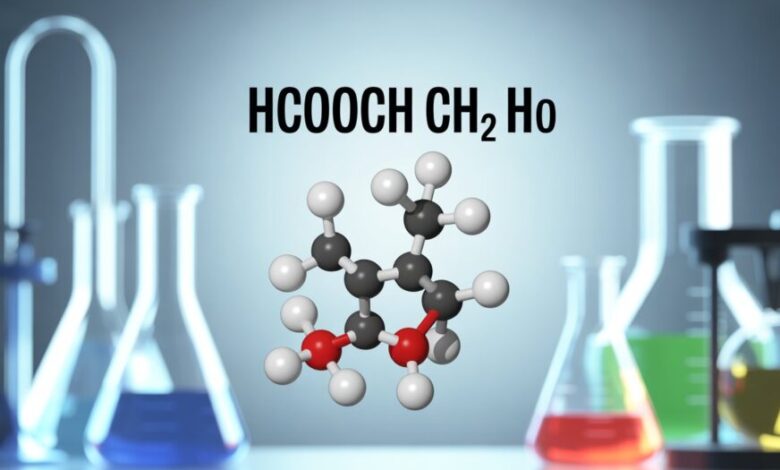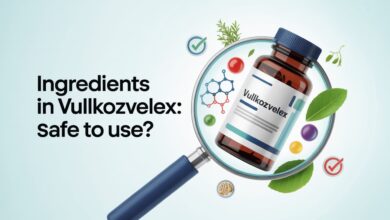Understanding HCOOCH CH2 H2O: A Simplified Guide to Chemistry Behind the Formula

When people come across the chemical expression “HCOOCH CH2 H2O,” it can feel confusing at first glance. Chemistry often presents us with letters and numbers that look like an unfamiliar code, but once you start decoding it, these formulas reveal exciting insights into reactions, molecules, and even everyday applications. This particular expression hints at something involving esters, carbon-based molecules, and water — all of which play a significant role in organic chemistry. In this article, we’ll break down what this keyword means, how it connects to chemical principles, and why it’s important in both academic and real-world settings.
Breaking Down the Formula
At first sight, HCOOCH CH2 H2O might not look straightforward. It seems like a combination of fragments from different compounds. However, the more you look at it, the more it resembles the kind of shorthand chemists use when writing out organic reactions.
One possible interpretation is that the “HCOOCH” portion resembles a formate ester group, where formic acid (HCOOH) reacts with an alcohol. Meanwhile, “CH2” points toward a carbon group, and “H2O” clearly stands for water. Altogether, this could represent a reaction where an ester undergoes hydrolysis (breaking down in the presence of water), or it might be shorthand for a transformation that produces water as a byproduct.
Breaking a formula down like this helps in understanding the bigger picture. Think of it as a puzzle: each segment tells you a story about the type of molecule involved and the role it might play in a reaction. Instead of viewing the formula as just strange text, you begin to see it as a structured equation that carries meaning.
Another point worth mentioning is that such shorthand is common in textbooks, lab notes, and research papers. Chemists don’t always write out the full molecular structures — sometimes, they abbreviate for convenience. So, when you see “HCOOCH CH2 H2O,” it could very well be a compact way of representing a larger chemical idea.
Esters and Their Importance

The ester group hidden in the HCOOCH CH2 H2O portion is worth talking about. Esters are incredibly important in chemistry because they’re found everywhere — from industrial solvents to the fragrances in perfumes and even in the flavors of fruits. They’re formed when an acid reacts with an alcohol, releasing water in the process. This fits neatly with the “H2O” part of our keyword.
If we treat “HCOOCH” as a simplified representation of an ester derived from formic acid, it means we’re already dealing with a class of compounds that’s not only central to organic chemistry but also deeply relevant to daily life. For instance, the fruity smell of bananas, apples, or pineapples often comes from esters. That’s why understanding even a fragment of a formula like this can lead to recognizing its real-world implications.
In industries, esters are used as solvents for paints, coatings, and even in nail polish removers. They’re also part of the chemistry behind biodiesel, where vegetable oils (which contain esters) are processed to create renewable fuel. So when you see “HCOOCH CH2 H2O,” don’t just think of it as abstract letters — it’s part of a much bigger framework that touches countless aspects of modern living.
Finally, esters are central to biochemistry. Many fats and oils in our body are technically esters of glycerol and fatty acids. Without them, energy storage and cellular functions would collapse. In short, the ester connection makes the keyword not just theoretical but highly practical.
The Role of Hydrolysis
The inclusion of HCOOCH CH2 H2O in the formula suggests that water is somehow involved. In organic chemistry, one of the most common reactions where water plays a role is hydrolysis. This reaction essentially means “splitting with water.” For esters, hydrolysis involves breaking them back down into their original acid and alcohol components.
For example, if you take methyl formate (an ester made from methanol and formic acid), and add water under acidic or basic conditions, it will split into methanol and formic acid again. This cycle of formation and breakdown is fundamental to chemistry, biology, and even industrial processes.
Hydrolysis is also the basis of digestion. When we eat, enzymes in our body help break down large biomolecules — like proteins, fats, and carbohydrates — into smaller, absorbable pieces through hydrolysis reactions. So the presence of “H2O” in our keyword is not random; it’s pointing toward one of the most essential types of reactions in both lab chemistry and biology.
In industry, ester hydrolysis is used to make soaps in a process called saponification. When fats (which are esters) react with a strong base and water, they break down into glycerol and fatty acid salts — the building blocks of soap. So, once again, the “HCOOCH CH2 H2O” formula, when linked to hydrolysis, has practical meaning that extends into our daily routines.
The Carbon Link: Why “CH2” Matters
The HCOOCH CH2 H2O part of the formula seems small, but it’s actually quite significant. In organic chemistry, CH2 groups are the backbone of countless molecules. They serve as connectors, helping to build chains, rings, and frameworks that define molecular structure.
Think about hydrocarbons like methane, ethane, propane — they’re all built from repeating CH2 units. When one CH2 group attaches to others, it forms the skeleton for molecules that can then hold functional groups like esters, alcohols, or acids. That’s why seeing “CH2” in this keyword is a reminder of just how central carbon is to all organic compounds.
Another reason CH2 is important is that it makes molecules flexible. Long chains of CH2 units give compounds the ability to bend, fold, or interact in ways that make them useful. For instance, in plastics, the repeating CH2 groups provide durability and versatility. In biological molecules like DNA, CH2 groups form part of the sugar backbone that keeps the structure stable yet adaptable.
So while “CH2” might look like just two letters and a number, it’s actually a clue about the underlying structure and behavior of the compound being represented. HCOOCH CH2 H2O It anchors the formula in the world of carbon-based chemistry, which is essentially the study of life itself.
Real-World Applications of the Concept
Now that we’ve broken down the components of HCOOCH CH2 H2O let’s talk about why any of this matters. Chemistry is not just about memorizing formulas; it’s about understanding the logic behind them and applying that knowledge.
For one, this kind of formula hints at synthetic pathways in organic chemistry. Esters, carbon groups, and water are all parts of reactions that chemists use to create everything from pharmaceuticals to materials. A deep understanding of these interactions allows industries to design drugs with targeted effects, materials with special properties, or fuels that are cleaner and more efficient.
Another application is in environmental science. Esters and hydrocarbons, when broken down with water, play a role in biodegradation. This means that waste products, pollutants, or even plastics can sometimes be decomposed naturally through hydrolysis reactions. Understanding the chemistry behind “HCOOCH CH2 H2O” helps scientists design biodegradable materials that are kinder to the planet.
Lastly, in academic contexts, students often encounter similar-looking formulas when learning reaction mechanisms. Breaking down something like this teaches analytical skills: instead of memorizing, you learn to interpret and connect concepts. HCOOCH CH2 H2O This ability is crucial not only in chemistry but also in fields like medicine, engineering, and biotechnology.
Why It’s Worth Learning About
You might wonder, “Why spend so much time on just a few letters and numbers?” The answer is that chemistry is a subject built on these small details. A single formula can reveal layers of meaning — from the structure of molecules to the way they behave in reactions, and even to their role in industries or nature.
The keyword HCOOCH CH2 H2O may look simple, but when broken down, it brings together core ideas: the role of esters, the importance of water in hydrolysis, the central place of carbon in organic chemistry, and the wide-ranging applications that connect theory to real life. By unpacking it carefully, you not only understand the formula itself but also get a glimpse of how chemists think and why chemistry is so impactful.
Conclusion
In the end, the expression HCOOCH CH2 H2O is more than just random text — it’s a doorway into understanding key ideas in organic chemistry. It points toward esters, highlights the importance of water in reactions, emphasizes the role of CH2 groups, and connects these ideas to practical applications in industry, biology, and the environment.
Learning to interpret formulas like this makes chemistry less intimidating and far more fascinating. It reminds us that even the most technical expressions are ultimately about real processes that shape our world, from the food we eat to the fuels we use and even the natural cycles that keep life going.
So the next time you stumble upon something like HCOOCH CH2 H2O don’t dismiss it as meaningless jargon. Instead, see it as an opportunity to unlock the hidden stories of chemistry — stories that are both scientific and deeply connected to everyday life.



